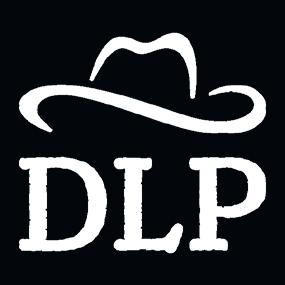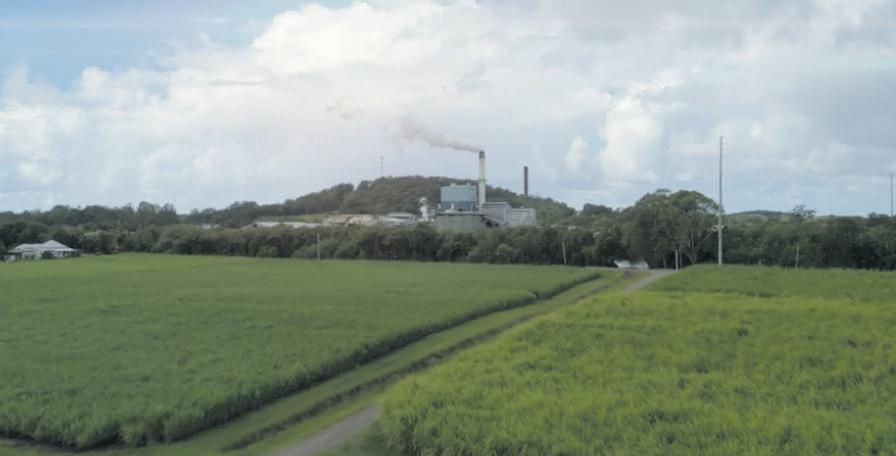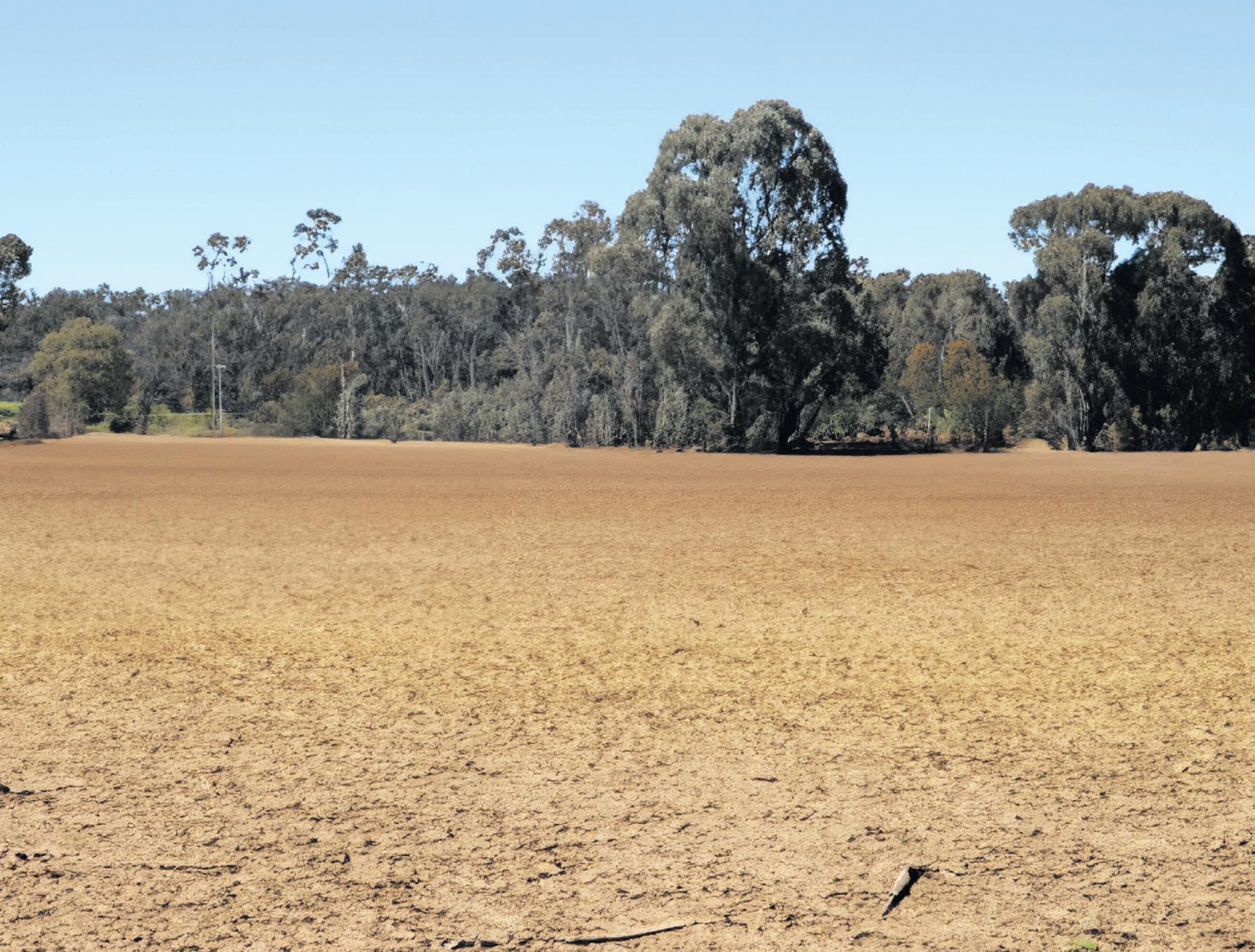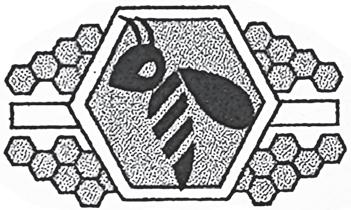
















Sugarcane has been grown in the NSW Northern Rivers region for over 150 years and has been a stable source of livelihood for hundreds of farming families and provided thousands of employment opportunities for the local community.
Throughout this time, the industry has weathered many challenges and navigated fuctuations in agricultural commodity prices on the back of a remarkably resilient crop - sugarcane.
This was demonstrated again in the catastrophic foods that impacted the region in early 2022.
Despite sugarcane crops being inundated under metres of water, in most cases, growers were able to harvest a crop during that season. Many other crops in the region did not fare as well.
The recent surge in sugar prices has further bolstered the strength of the NSW sugar industry,
with growers poised to receive over $55 per tonne of sugarcane for at least the next three seasons.
This combination of factors has prompted a renewed interest in sugarcane production in the region.
Chris Connors, Chief Executive Offcer ofSunshine Sugar, noted, “In the last 6 to 12 months we have received numerous inquiries from both existing and prospective sugarcane growers looking to expand their cane production or venture into the sector.”
Mr. Connors attributes this surge in interest to a
combination of factors, including attractive sugar prices, the resilience of the sugarcane crop, the positive outlook for the sector and farmers looking to diversify their cropping operations and spread risk.
The Sunshine Sugar Board has recently approved applications
for more than 1,000 hectares in the Richmond Valley area to transition to sugarcane this season. The property owners are keen to tap into the opportunities the local sugar industry provides, and as such have been granted a production entitlement.


With planting season
having just started, anyone holding land in the Northern Rivers region and interested in sugarcane cultivation, is encouraged to reach out to their nearest sugar mill or contact the Sunshine Sugar corporate offce situated in Ballina.
The RAS Foundation will be investing $35,000 into macadamia researcher Leoni Kojetin as part of the renowned Nuffeld Scholarship program to help support vital research that could help advance the Australian Macadamia industry.

Kojetin, a current industry development manager for the Australian Macadamia Society, will be exploring the effects of climate change on macadamias, as well as sustainability practices from around the world that can provide solutions for Australian growers.
Visiting macadamia
producing countries such as South Africa, Kenya and Brazil, Kojetin hopes to discover new and viable practices that will allow Australian macadamias to be more competitive on an international market.

RAS Foundation Manager, Cecilia Logan says the Foundation is delighted it is able to help fund such important research.
“The core of what we do as a wider organisation is to support the advancement of agricultural practices, primarily through the Sydney Royal competitions, while the RAS Foundation focuses on investing
in people and projects in regional and rural areas. The Nuffeld Scholarship program, and in particular Leoni’s research, work towards both of these important missions,” Cecilia Logan said.
“As our world continues to change and exporters are consistently dealing with external pressures, research like Leoni’s is vital to the advancement of the industry.”
In her Nuffeld scholarship interview, recipient Leoni Kojetin praised Australian macadamia growers on their dedication to best practice but said there is research required to
ensure the longevity of the industry.
Leoni says Australian macadamias are viewed as a premium product around the world, “thanks to the commitment of Australian macadamia growers to clean, green, sustainable production and world’s best practices”.
To enhance this reputation, she wants to research innovative solutions for tree crops and agriculture more broadly – “so we remain competitive, and the most sought-after origin for macadamias, while continuing to champion our environment”.
Leoni says she has

seen both the highs and lows in Australia’s macadamia industry, but one constant challenge remains.
“More than 80 per cent of Australian macadamias are exported all over the world, however one of our main challenges lies in the fact we are competing with developing countries that have very low costs compared to us.
“To remain viable, we need new, cost-effective, agronomically sound and sustainable practices.
“I am extremely grateful for the opportunity to be able to pursue solutions for our industry and would like to thank the

RAS Foundation for supporting me in this Nuffeld scholarship”.
Access the 2023 Nuffeld Scholarship offcial media release here or explore how the RAS Foundation is giving back to communities at www. rasf.org.au
To continue to help build brighter and more sustainable regional and rural communities, the RAS Foundation has a range of grants and education scholarships on offer including the RASF Community Futures Grant program which is currently open for applications.


OzFish Unlimited
Southern Pygmy Perch are small in stature, but they are in danger of disappearing altogether in NSW without efforts to restore habitat and create new breeding populations to give this little fsh a fghting chance.
OzFish Unlimited
- Australia’s fshing conservation charity, Landcare NSWand the NSW Department of Primary Industries - Fishing have been working hard in a collaborative project to help restore their numbers.


The organisations have restored fsh habitats at Oolong Creek, 80km north of Canberra, to support the dwindling population of the species (Nannopercaaustralis), a small fsh that grows to a maximum size of a mere 85mm.
OzFish’s River Repair
Bus members and a hardy band of volunteers from Gunning District Landcare have remove invasive woody weeds from the tributary of Jerrawa Creek.
They have also helped renowned fsh ecologist Associate Professor Mark Lintermans from the University of



Canberra and staff from the NSW Department of Primary Industries Fisheries to catch Southern Pygmy Perch at a wild breeding area. A variety of nets were used to take a subset of around 200 of them to a site upstream of a waterfall so they can establish a population away from the threat of alien species.
In NSW there are only three populations that remain after widespread loss of habitat and predation from alien species like redfn and carp. The Southern Pygmy Perch is listed as an endangered species in

NSW.
They are a great natural indicator of the health of our waterways – in larger streams they are an important food source for larger fsh like golden perch and Murray cod as well as birds like wild heron.
“Once abundant across the state, the species has suffered major population declines and is now only found in minimal locations in NSW,” Braeden Lampard, OzFish’s Murray-Darling Basin Senior Program Manager, said.

“If action isn’t taken to preserve and support
their numbers, there is a very real threat they could become extinct.”
Professor Lintermans said they would continue to monitor the site and translocate more Southern Pygmy Perch in the coming years.
“For threatened fsh translocation, the ideal measure is that you have offspring of offspring. The fsh that you’ve put in there have grown up and bred and then the offspring from that breeding have grown up and bred so you have three generations of fsh in a population.
“Then you’re confdent that you know it’s going



to stick.”

Luke Pearce, the NSW Department of Primary Industries Senior Fisheries ManagerHabitat & Threatened Species Unit, said further potential sites had been identifed to be natural hatcheries that would continue repopulation efforts in the region.
He added that it was important to highlight that redfn are not only an alien species but highly damaging, along with carp, to native fsh, particularly small-bodied species like the Southern Pygmy Perch.
“It’s astounding how many people I come
across who think redfn are a native species and that they’re benign in their impact. They’re so voracious and abundant and they breed up in big numbers,” he said.
“They invade new areas and there’s an explosion in the population where they dominate the system. In that initial boom is when the real damage is done - they can decimate populations of natives and wipe them out.”
The frst stage of the Oolong Creek project involved removing woody weeds, such as crack willow, blackberry, and white poplar, which are negatively impacting the waterway habitat along a 2km stretch of the creek from the Gary Cosgrove Bridge.
The project is part of OzFish’s Driving Fish Habitat Action partnership with Landcare NSW, in collaboration with Dalton Community Association, NSW DPI Fisheries, and renowned researcher Mark Lintermans, with funding support from the NSW Recreational Fishing Trusts, the Australian Government through the CRC Program, and BCF – Boating, Camping, Fishing.
Results at a glance:
• NSW farmer sentiment has declined in the latest survey after stabilising last quarter.
• More of the state’s farmers are concerned about dry seasonal conditions and softer commodity prices, while input costs are still being reported as a worry.
• Farm investment intentions have softened.
An increased number of New South Wales farmers are concerned about the outlook for the year ahead, with dry seasonal conditions and lower commodity prices weighing on sentiment, the latest quarterly Rabobank Rural Confdence Survey has found.
The survey, released today, found farm sector sentiment in the state had recorded a considerable decline after stabilising in the previous quarter.
A total of 60 per cent of NSW farmers indicated they expected conditions in the agricultural economy to deteriorate in the 12 months ahead (compared with 36 per cent in the previous quarter). While 29 per cent anticipated the agricultural economy would remain stable, only eight per cent were forecasting an improvement (down from 14 per cent).
Of those NSW farmers expecting business conditions to worsen, falling commodity prices were the primary reason – mentioned by 64 per cent. And increasing number were also concerned about drought – 45 per cent (up from 30 per cent in quarter two).

And despite returning to more average levels over the past year after spiking in mid 2022, input prices were still factoring as a worry for the state’s farmers –cited by 29 per cent as a reason for their negative outlook.
Interest rates, however, were found to be slightly less of a concern –nominated by 19 per cent
of those with a negative outlook on the economy (down from 24 per cent previously).
Commodity prices were also cause for optimism for some though – for 51 per cent of those New South Wales farmers with a positive outlook on the 12 months ahead, albeit down from 60 per cent with that view in the previous quarter.
There was also increasing optimism about overseas markets/ economies – nominated by 19 per cent of farmers with a positive outlook (up from eight per cent in the previous quarter).
Seasonal conditions though were less cause for optimism this quarter – nominated by 16 per cent of farmers holding positive expectations, compared with nearly 30 per cent the previous quarter.
Rabobank regional manager for Riverina
Sally Bull said “it’s chalk and cheese” with two very different seasonal situations at play in NSW – with central, western and northern areas being very dry – while in southern regions and through the Riverina, farmers have generally been enjoying good seasonal conditions.
“While the season is
good across much of the south of the state, southern farmers are still conscious of the prospect of drier seasonal conditions forecast in the year ahead and this is weighing on their minds,” Ms Bull said.
“The growing worry about declining seasonal conditions has dovetailed into general concern farmers have held about softening commodity prices – this is particularly the case for livestock producers.”
The survey, completed last month, found the largest decline in confdence to be observed within the state’s mixed farming sector (grain and livestock) – with 75 per cent of NSW mixed farmers expecting economic conditions to worsen in the year ahead (up from 48 per cent last quarter) and only two per cent expecting an improvement (compared with 18 per cent previously).
Easing commodity prices were identifed as their chief concern.
This quarter, 59 per cent of NSW beef producers surveyed believe the economic conditions would worsen in the coming 12 months (up from 37 per cent last quarter), while nine per cent are expecting
business conditions to improve – down from 16 per cent previously. And 32 per cent are anticipating conditions to remain unchanged.
Of those NSW beef producers expecting economic conditions to decline, falling commodity prices are the primary concern (for 64 per cent) and dry seasonal conditions are a worry for 50 per cent.
“While cattle prices have eased this year, seedstock producers have generally enjoyed positive results this selling season,” Ms Bull said. “Though at bull sales held in recent weeks we have started to see lower price averages, in some cases up to 30 per cent less.”
Sheep producer confdence across NSW also declined this survey, with the majority of producers (at 66 per cent, up from 25 per cent previously) expecting farm business conditions to worsen.
Over half (56 per cent) of the state’s grain growers believe agricultural economic conditions will decline in the next 12 months (up from 48 per cent previously), with 12 per cent anticipating an improvement (up slightly from eight per cent in quarter two).
“The situation across the state is patchy – with the dry conditions meaning some grain growers in the north of the state chose not to plant a crop this season,” Ms Bull said, “while in parts of central NSW, crops are good to average – but contingent on receiving rain in the next month or two. And there are some very good crops through the Riverina – though with some impacted by the inability to add urea when needed due to insuffcient supply.”
The survey found NSW cotton grower confdence overall had picked up, with 23 per cent of growers expecting agribusiness conditions to improve in the year ahead (no cotton growers held this view in the previous survey), while 40 per cent expect no change and 33 per cent are expecting conditions to decline (29 per cent previously).
For the cotton sector, Ms Bull said, southern NSW has experienced one of its worst production seasons on record – with very poor harvests in the southern valleys. “Cotton growers in northern valleys though have generally fared better and are looking forward to the next season knowing
they have full water allocations,” she said.
Investment intentions amongst NSW farmers have fallen this quarter, with 25 per cent planning to reduce the amount of investment in their farm business over the next 12 months (up from 10 per cent with that intention last quarter) and 18 per cent to increase investment (down from 22 per cent).
Ms Bull said farmers are becoming increasingly cautious on all spending –considering the outlook for commodity prices and the season –before committing to investment projects.
Of those farmers looking to increase their investment, the number planning to purchase property has increased from 16 per cent last quarter to 23 per cent this quarter, while 52 per cent intend to invest in new plant/machinery (compared with 34 per cent in quarter two).
The survey found farm debt is expected to rise, with 22 per cent of NSW farmers looking to increase their debt (up from 15 per cent) and 18 per cent expecting to decrease (down from 21 per cent).
NSW farmers overall expect their incomes to fall in the year ahead –53 per cent expecting their income to decrease (up from 41 per cent last survey) and just 16 per cent expecting incomes to increase (down from 19 per cent).
A comprehensive monitor of outlook and sentiment in Australian rural industries, the Rabobank Rural Confdence Survey questions an average of 1000 primary producers across a wide range of commodities and geographical areas throughout Australia on a quarterly basis.
The most robust study of its type in Australia, the Rabobank Rural Confdence Survey has been conducted since 2000 by an independent research organisation. The next results are scheduled for release in December 2023.

Elders has announced a national grant program to further support the needs of rural and regional communities with its launch of the Elders Community Giving Project, at the Regional Australia Institute’s (RAI) Regions
Rising National Summit.
Run by Elders, for Elders’ communities, the Elders Community Giving Project will open applications in March 2024 offering grants of up to $20k for grassroots initiatives that will promote sustainable, focused, and long-term change in communities. Purposely curated to have targeted impact, grants must align to one of the following pillars:
• Investing in people and regions



• Environmental consciousness
• Innovation into the future


• Healthy bodies and healthy minds
• Encouraging and celebrating diversity
• Safety frst
• People’s choice, which will be voted on my Elders employees
The new grant scheme will complement the existing work been done by Elders branches which gave over $2.69 in sponsorships and donations in FY22.
The announcement comes on the back of the Regional Australia Institute’s progress report on the Regionalisation Ambition, released this week which demonstrates several concerning disparities between country Australians and their metropolitan
counterparts, particularly in the areas of housing and workforce.
The Project is purposely aligned to the RAI’s pillars to ensure synchronicity and targeted efforts towards identifed areas of focus.
CEO Mark Allison said the grant program aims to kickstart innovative initiatives and projects which may begin to start addressing some of these challenges.
“The Elders culture is true to the value of community spirit, it’s something our people embody, and this program will help both strengthen and spotlight this,” Mr Allison said.
“This initiative is one way we will give back and invest in initiatives that will support in building further connections and
capability in our towns.
“There is much creativity and ingenuity in our regions, and I am so pleased that we can play our part to bring these to life, alongside our village of people and partners.”
Elders recently signed a three-year partnership with the Regional Australia Institute to advance its work to ‘rebalance the nation’ and create a more equitable future for the 9.5 million Australians who live outside of city bounds.
Grant applications will open in March 2024 and are open to all not-forproft organisations in regional, rural and remote communities (please note additional application criteria will apply).
The Future Drought Fund (FDF) is investing $1.6 million through the country’s leading agricultural scholarship organisation, Nuffeld Australia, over the next two years for scholarships and training.
The frst 5 Drought Resilience Scholars supported by the FDF were announced overnight. They are:

• Caitlin Herbert from Eugowra, NSW, researching the rolle cattle feedlots can play in helping the beef supply chain prepare for drought.
• Michael Taylor from Kentucky, NSW. The former Australian Farmer of the Year will study solutions to the challenges that hinder the widespread adoption of agroforestry.
• Claudia Benn from Injune, QLD, will extend on the work of previous Scholars to help Australian farmers farm more proftably in alignment with natural systems.
• Ben Poschelk farms at Glenn Innes, NSW. Ben will undertake a global analysis of resilience thinking and change in people and communities who have adapted to adverse weather conditions.


• Natalie Schlitz from Kerang, VIC, will investigate weaknesses that threaten the viability of the Australian fodder export sector in a water-limited future.
The FDF Drought Resilience Scholarship Program will support farmers across 2024 and 2025 to increase their knowledge of new tools and practices helping the agricultural sector
respond to a changing climate.
Scholars will travel overseas to study drought resilience and learn from international leaders in the feld.
The FDF’s investment will also see all Nuffeld Australia scholars supported to increase their knowledge of drought resilience to better prepare themselves and their communities for drying conditions.
First Assistant Secretary of Farm Resilience, Mel Brown, said the scholarships provide farmers with a valuable opportunity to gain an international perspective on drought resilience activities.

“The FDF supports scholars to build drought resilience expertise, adapt innovate technology and practices from overseas, and allows these learnings to be shared to advance Australian agriculture,” Ms Brown said.
“The department congratulates the 5 Drought Resilience Scholars awarded for 2024 and looks forward to seeing what can be accomplished through this important investment.”
For further information or to learn how to apply for the 2025 Drought Resilience Scholarship Program visit the QR Code bellow.
In a study of global signifcance and at a scale never previously undertaken, Phase 2 of the Farming for the Future research program has collected fnancial, ecological and social data from 130 Australian grazing and cropping enterprises, the preliminary results of which were unveiled today at the National Farmers’ Federation & Farming for the Future Natural Capital Summit in Canberra.
Dr Sue Ogilvy, Program Director, Farming for the Future said the initial research fndings demonstrate that it is possible to establish and quantify the relationship between a farm’s natural capital, and its productivity and proftability.
“This is the prototype phase of our program, but already we have evidence that shows there is great potential to be realised by being able to quantify the value of investing in a farm’s natural capital,” Dr Ogilvy said.
“The methods developed for the project will help to provide a baseline for both emissions and natural capital condition and value in productive landscapes, and support policy and private investment to realise a more fnancially prosperous, climate-resilient, and environmentally positive agriculture sector in Australia.
“Importantly, our analysis has identifed the real possibility of an ‘opportunity zone’ where investment in the ecological condition of a farm is associated with fnancial benefts.”
Preliminary results from Farming for the Future Phase 2 research indicate that:
• High levels of farm productivity are possible from both intensive livestock enterprises (with low natural capital) and those with higher of natural capital, but high natural capital farms are more proftable in fnancial terms.
• There are different ‘beneft pathways’ through which natural capital can support farm businesses, including via improving productivity, and/or by reducing input costs.
• Most of the relationships between natural capital and farm business performance that we observed were positive and linear. This means that most farms in our sample, and similar farms within the broader farming population, could improve their business outcomes by improving their natural capital.
business performance is, for the most part, a positive one with clear evidence of the ‘opportunity zone’ for all farm metrics tested.
“As natural capital improves, so too can farm performance. It is possible that there is some trade off point at very high levels of natural capital, but our research has found that most farms haven’t reached a trade-off point so there is still scope to realise productivity and proftability benefts from further investment in natural capital.
The Farming for
to develop the tools and benchmarks to inform decisions about investment in a farm’s natural capital and the opportunity for improved fnancial performance,” Dr Ogilvy said.
Initiated by philanthropic foundation, the Macdoch Foundation, Farming for the Future, is industryled and supported. Funding for the frst phases has been secured from a broad network of supporters, including philanthropists, government, banks, and industry bodies including Meat & Livestock
what you don’t value. There is already an extensive knowledge base and capability amongst farmers but there is not currently a comprehensive and consistent set of natural capital measures to support widespread adoption of natural capital measurement across Australia.
“By empowering farmers to invest in natural capital for climate resilience, and providing the tools to support how farmers interact with markets, supply chains, banks and governments, farmers
that are in the public good.
Program Director, Dr Sue Ogilvy said, “Farming for the Future is a program designed to achieve public interest goals and collective impact via crossdisciplinary and crossindustry collaboration. Our philanthropic mission frees us up to work across disciplines, establish unique collaborations, take calculated risks, go fast, and achieve breakthroughs that others are unable to. We have now proven that relating natural capital to farm business performance is possible, and we have done it. Philanthropy has acted to create this ‘proof-of-concept’, reducing the risk and paving the way for future investment by others for us to scale.
• Our landholder surveys show that the potential for private fnancial benefts is the most compelling reason for farmers to invest in natural capital improvements.
• Delivering insights into natural capital-farm business relationships across a broader range of focus regions and enterprise types would help to drive large-scale industry adoption of improved natural capital management (+38% of farms beyond forecast baseline levels).
Results of analysis show that the relationship between natural capital and farm
the Future research team is supported by a multidisciplinary network of farm advisors, natural resource management (NRM) experts, and scientists to conduct the program of research, analysis, and systems change activation.

“Importantly, we have been able to tease out individual natural capital measurement indices that can be directly related to farm management actions.
“By working hand-inhand with farmers and their advisors during the research to understand what information would be useful, we can start
Australia, and Australian Wool Innovation.
At the joint Farming for the Future and National Farmers’ Federation (NFF) event in Canberra today, Tony Mahar, CEO, NFF spoke about the opportunity for Australian agriculture to employ initiatives that build farm-level information that deliver returns to farmers and rewards them for compiling that information.
“One of the key premises for practice change with respect to natural capital is that you can’t manage what you can’t measure, and you won’t invest in
will be better equipped to make decisions about natural capital to make their businesses productive, proftable and resilient under climate change and be recognised for good management of natural capital,” Mr Mahar said.
Future research will be expanded to include a diversity of farming businesses across Australia with the intent of revealing the value of natural capital to agriculture by quantifying the private benefts to farmers that accrue when they manage natural capital in a way that also delivers environmental outcomes
“Funding is now being sought to expand our research activities to incorporate 1,500 livestock, cropping and mixed cropping-grazing farm businesses as well as horticulture and rangelands pastoral enterprises across all Australian states and territories. Completion of the research program will see consolidation of program outputs and generation of capability to enable mainstream farm management and reporting to include natural capital business value benchmarking and enable farmers to effciently report their performance to stakeholders.
“Ultimately, program assets will be transferred, as a nationally signifcant information capability, to a long-term, trusted institutional owner who will continually update the evidence base and make the fndings widely available for the empowerment of farmers to assure healthy productive landscapes and resilient rural communities that are ready to face future challenges from emerging markets and a changing climate,” Dr Ogilvy said.